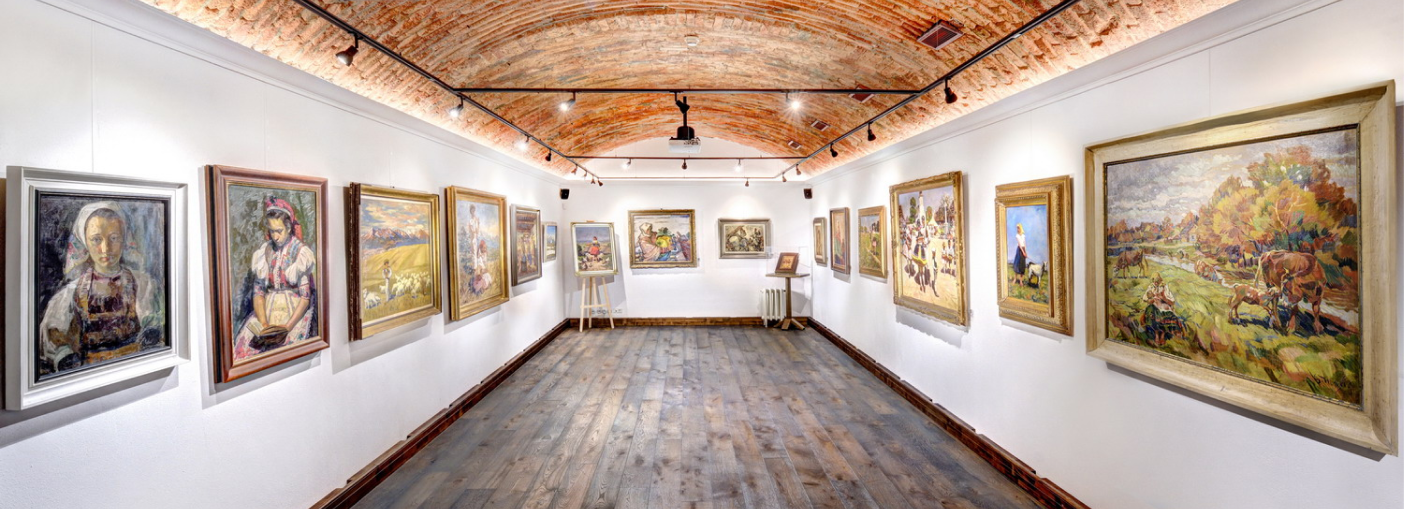
Vladimír Kompánek was born on 28th October, 1927 in Rajec and died on 20th January, 2011 in Bratislava. In 1939 – 1947 he studied at the secondary grammar school in Žilina, where he obtained the first artistic instruction from his professor at the grammar school, the sculptor S. Bíroš. From 1947 to 1949 he studied at the Department of Drawing and Painting of SVŠT in Bratislava (professor G. Mallý, J. Mudroch, K. Sokol) and subsequently until 1954 at the University of Fine Arts in Bratislava (professor Jozef Kostka). In 1956, Kompánek made the first small sculptures of rural women and a year later he participated in the arrival of a new artistic generation as a co-founder of The Group of Mikuláš Galanda (known as Galandovci). From 1960 he lived alternately n Bratislava and in his native Rajec. In 1964 he took part in the XXXII. Biennale in Venice. His first wooden sculptures originated in the period between 1961 and 1962, followed by the first character gouache drawings (1965 – 1966). In 1967 he was awarded the national prize of G. Herder in Vienna. His work was presented at the World Exhibition EXPO 67 in Montreal. In 1969, he created wooden sculptures for EXPO 70 in Osaka, as well as the first wooden animals and toys. In 1972 his membership in the Union of Slovak Fine Artists was suspended for political reasons Despite this fact he dedicated himself fully to painting (1973). In 1974, in his painting and sculpture appeared the mythologic character of Turoň and the Shrovetide theme of Rajec region. In the period 1977 – 1980 he painted a series of winter landscapes and figurative or character-based staffage. He was readmitted to the Union of Slovak Fine Artists. In 1982, new themes started to appear in his painting – erotic motifs of the beauty and the beast, abductions, Leda and the swan etc. But he also made wooden penates and field-related characters in sculpture and drawing. In 1990 – 1993, the author created large-size wooden statues by assembling differently stained wooden planks. The reasons of the artistic evolution of Kompánek´s style from the schematism of the 1950s until the origin of the Galandovci group are analogous to the development of Milan Laluha or Milan Paštéka, Andreja Barčík and Rudolf Krivoš. However, his points of departure, are much more embedded in his native region of Rajec valley with its carving and woodcraft culture. This applies particularly to the author´s sculptural creation. But this component principle of characters and ideograms of rustic style gets into a great deal of his painting as well. Whether it is winter landscapes, genre spectacle, little churches, farmyards and tools, material landmarks in the fields, meadows and mountains, toys, cheerful winter and Christmas objects, the author subordinates all this iconographic ‘love’ to the peculiar visual composition, which is rustically communicative and at the same time artistically challenging, maximalist, modern – in contact with the European avant-garde art from the World War I until this day. Narration of winter and character extracts in the fluffy and sporadically rubbed painting are not at all contradicting each other. Bibliography: Plevza, V.: Vladimír Kompánek. Bratislava 1988; Rusinová, Z., Kubíková, K.: Vladimír Kompánek – sochy, kresby. Katalóg SNG, Bratislava 1993.
